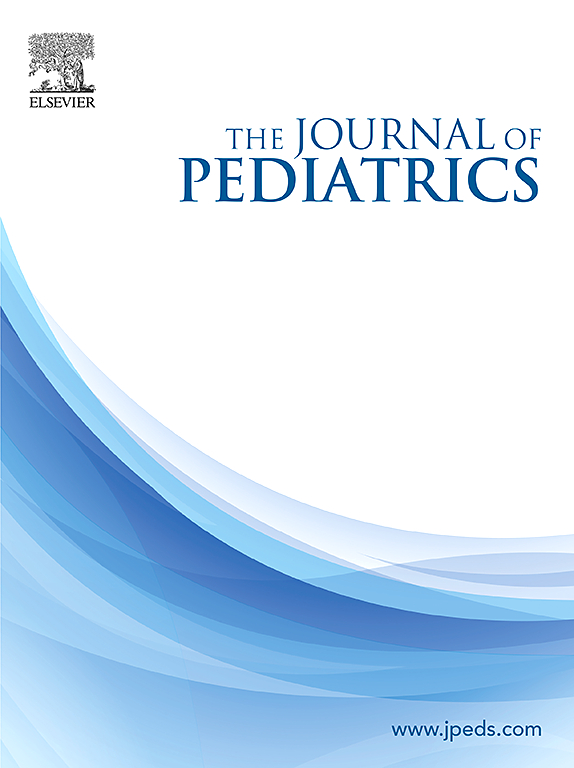Neurobehavioral Profiles in Opioid-Exposed and Unexposed Neonates
IF 3.9
2区 医学
Q1 PEDIATRICS
引用次数: 0
Abstract
Objective
To describe distinctive profiles of neurobehavior in opioid-exposed and unexposed neonates.
Study design
The Outcomes of Babies with Opioid Exposure study is a multisite, prospective, observational study in neonates born at term with opioid exposure and unexposed controls. As part of the Outcomes of Babies with Opioid Exposure study protocol, certified examiners administered the NeoNatal Neurobehavioral Scales, second edition (NNNS-II) before 6 weeks postnatal age. We used latent profile analysis to determine distinctive classes of neurobehavior and linear mixed effect models to compare NNNS-II scores by exposure status.
Results
The study included 291 neonates with NNNS-II, 194 exposed and 97 unexposed. Latent profile analysis resulted in 4 unique classes. Class 4 showed the most signs of stress and included almost exclusively exposed neonates. Scores for exposed neonates were significantly different than unexposed neonates on most NNNS-II subscales. In addition to opioids, associations were found between profile membership and prenatal exposure to benzodiazepines, e-cigarettes/tobacco, and selective serotonin reuptake inhibitors.
Conclusions
Neonates with prenatal exposure to opioids and other psychotropic substances have distinctive patterns of neurobehavior. Additional follow-up is needed to determine if these neurobehavioral differences serve as a marker for future problems with attention and behavior.
Clinical Trials.gov Registration
NCT04149509.
求助全文
约1分钟内获得全文
求助全文
来源期刊

Journal of Pediatrics
医学-小儿科
CiteScore
6.00
自引率
2.00%
发文量
696
审稿时长
31 days
期刊介绍:
The Journal of Pediatrics is an international peer-reviewed journal that advances pediatric research and serves as a practical guide for pediatricians who manage health and diagnose and treat disorders in infants, children, and adolescents. The Journal publishes original work based on standards of excellence and expert review. The Journal seeks to publish high quality original articles that are immediately applicable to practice (basic science, translational research, evidence-based medicine), brief clinical and laboratory case reports, medical progress, expert commentary, grand rounds, insightful editorials, “classic” physical examinations, and novel insights into clinical and academic pediatric medicine related to every aspect of child health. Published monthly since 1932, The Journal of Pediatrics continues to promote the latest developments in pediatric medicine, child health, policy, and advocacy.
Topics covered in The Journal of Pediatrics include, but are not limited to:
General Pediatrics
Pediatric Subspecialties
Adolescent Medicine
Allergy and Immunology
Cardiology
Critical Care Medicine
Developmental-Behavioral Medicine
Endocrinology
Gastroenterology
Hematology-Oncology
Infectious Diseases
Neonatal-Perinatal Medicine
Nephrology
Neurology
Emergency Medicine
Pulmonology
Rheumatology
Genetics
Ethics
Health Service Research
Pediatric Hospitalist Medicine.
 求助内容:
求助内容: 应助结果提醒方式:
应助结果提醒方式:


